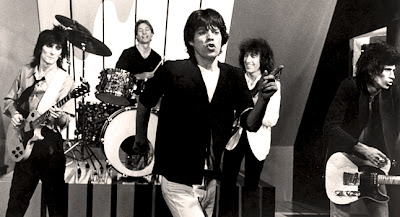Always Almost Falling Apart
With the Stones being upfront in our consciousness as they celebrate 50 years together it's worth considering their aesthetic. Call it intentional sloppiness played with commitment and groove. After watching some of their concert films this fall, it seems to me that for this reason they do embody rock and roll more than any other group. The always-almost-falling-apart aesthetic is compelling and can be approached from a couple musical angles, both of which the Stones seem to embody at any given time.
The first is the "inspired amateurism" angle exemplified by the garage rock movement of the 60s and the early punk movement of the late 70s and early 80s. Think of the Replacements. We cheer because they sound good but also because they made it through the song without messing up too bad--just like we in the audience might do if we were brave enough to give it a go, too. The joy comes from the effort and the spirit and not from any sort of rectitude.
The other angle is exemplified by the music of the jazz master Charles Mingus. Mingus and his musicians were virtuosos but played like hell and achieved a kind of ragged sophistication. Part of this came from not over rehearsing I think. But listen to "Better Get it In Your Soul," from Mingus Ah Um, and you can hear Mingus exhorting everyone to approach the inspired cacophony of a gospel meeting.
Once you get a taste for the "always-almost-falling-apart" sound it's hard to love anything else as much. It applies to all the art forms, too.

This is a test comment
ReplyDeleteAdore the concept of "always-almost-falling-apart". It also explains the attraction of decaying decadence - a fine example of which is a 19th century silk damask cushion in our living room, heavy with metallic embroidery and shredding even more at the mere hint of a zephyr, that bears a small label, M. Ce. DuChene, 66 Fg, St. Honore - PARIS. Like those early Stones performances, the luck of its survival makes one want to cheer.
ReplyDelete